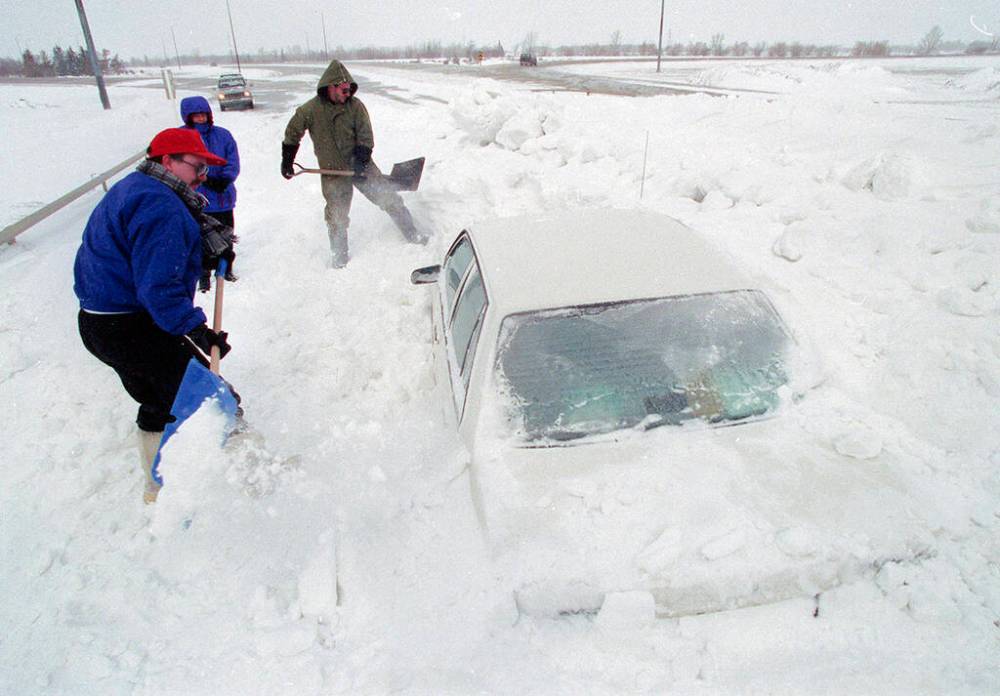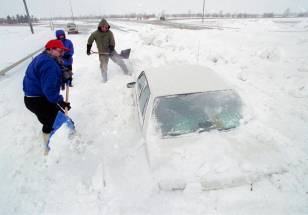Threat of major flood tests premier’s luck
Read this article for free:
or
Already have an account? Log in here »
To continue reading, please subscribe:
Monthly Digital Subscription
$0 for the first 4 weeks*
- Enjoy unlimited reading on winnipegfreepress.com
- Read the E-Edition, our digital replica newspaper
- Access News Break, our award-winning app
- Play interactive puzzles
*No charge for 4 weeks then price increases to the regular rate of $19.00 plus GST every four weeks. Offer available to new and qualified returning subscribers only. Cancel any time.
Monthly Digital Subscription
$4.75/week*
- Enjoy unlimited reading on winnipegfreepress.com
- Read the E-Edition, our digital replica newspaper
- Access News Break, our award-winning app
- Play interactive puzzles
*Billed as $19 plus GST every four weeks. Cancel any time.
To continue reading, please subscribe:
Add Free Press access to your Brandon Sun subscription for only an additional
$1 for the first 4 weeks*
*Your next subscription payment will increase by $1.00 and you will be charged $16.99 plus GST for four weeks. After four weeks, your payment will increase to $23.99 plus GST every four weeks.
Read unlimited articles for free today:
or
Already have an account? Log in here »
Hey there, time traveller!
This article was published 11/04/2022 (1338 days ago), so information in it may no longer be current.
It has often been said when it comes to overcoming political challenges, it’s better to be lucky than good. Nobody embodied that adage more than former Manitoba premier Brian Pallister.
Although he bristled when anyone had the temerity to accuse him of being lucky, looking back at the five-plus years Pallister spent leading the provincial government, it’s hard to ignore the quantity and quality of good fortune.
For most of the time Pallister was in charge, the opposition NDP and Liberals were, for the most part, in disarray and unable to mount a significant challenge. The economy from 2016-21 significantly outperformed the five years prior. Federal transfer payments, particularly equalization, increased at an exponential rate, gifting the Tory government roughly $1 billion more in revenue than Ottawa sent Manitoba during the last five years of NDP government.

And perhaps most importantly, Pallister never had to contend with a major flood event.
The propensity for the Red and Assiniboine rivers, and their tributaries, to overflow their banks and flood the flat clay that dominates southern Manitoba is perhaps the single most impactful phenomenon in provincial politics.
Those murky floodwaters have threatened livelihoods, damaged properties, eviscerated crops, crippled provincial budgets and forever changed the trajectory of political careers.
Officials warn southern Manitobans to batten down hatches

Posted:
Experts are urging Manitobans to stock up on groceries, medicines and candles, warning the equivalent of a month of snowfall will pummel the province starting Tuesday night, while gusts will likely down Hydro lines through to Friday.
That history of watery destruction and mayhem is no doubt top of mind for Premier Heather Stefanson, who presides over her first provincial budget — just as Manitoba is bracing for an expected April blizzard wallop.
The margin for Stefanson between disaster and salvation in the coming days will be razor thin.
If the precipitation meets or exceeds forecast amounts, and temperatures following the storm rise higher and faster than expected, Manitoba may face a flood event that could overwhelm the Stefanson government as it attempts to battle a COVID-19 pandemic-era budget deficit and repair the damage done by Pallister-era austerity to health care and education.
A flood update provided Monday showcased the precariousness of the situation.
Forecasters believe unseasonably cool temperatures over the next two weeks should slow melting of whatever snow falls over the next few days. A slow melt means less flooding; warmer temperatures and a faster melt mean it’s time to fill sandbags and put on the wellies.
However, this optimistic scenario is completely dependent on the weather forecast being accurate. Hardly anyone in Manitoba needs to be told how quickly the actual weather can change from the forecast.
In other words, Stefanson should keep her fingers crossed that when Pallister was summarily forced from office last fall by dissidents in the Tory party, he left behind a small reserve of good luck.

Major flood events — which typically involve evacuations and widespread property and crop damage on the Red River Valley — are so expensive there is no way for any government of any political stripe to cover the costs through reserves and contingency funds.
Flood costs quickly and effectively render budgets and spending plans meaningless, and in the process, trash political reputations.
In April-May 2011, Manitoba experienced the costliest flood in its history along the Assiniboine and Red rivers. When all the bills were counted, it led to more than $1 billion in unfunded provincial expenditures that completely skewed the fiscal record of the NDP over its last five years in government.
Contrary to popular belief, the NDP did not spend wildly while in power. Even during the period when premier Greg Selinger led after taking over from Gary Doer, annual spending increases in provincial budgets averaged about 2.8 per cent.
The 2011 billion-dollar flood changed all that, boosting the average of annual spending to close to four per cent and, in the process, gift-wrapping a potent narrative for political enemies to use in the 2016 election.
Manitoba continues to receive gaudy increases in annual federal transfer payments. In the upcoming fiscal year, starting April 1, the province is the beneficiary of a bump of more than $300 million in total transfer payments, with $210 million of that increase coming from equalization.
Meantime, Stefanson has shared in some of that Pallister-era luck.
Manitoba continues to receive gaudy increases in annual federal transfer payments. In the upcoming fiscal year, starting April 1, the province is the beneficiary of a bump of more than $300 million in total transfer payments, with $210 million of that increase coming from equalization.
Stefanson also has the comfort of knowing she has one more budget to deliver before Manitobans are scheduled to go to the polls in 2023. That one (for the 2023-24 fiscal year) will likely benefit from a significant rebound in economic activity and government own-source revenues as the world starts to put COVID-19 in the rear-view mirror.
However, before Stefanson can show Manitobans her capacity to repair the damage done by her predecessor, she is going to have to be lucky enough to survive a blizzard.
dan.lett@freepress.mb.ca

Born and raised in and around Toronto, Dan Lett came to Winnipeg in 1986, less than a year out of journalism school with a lifelong dream to be a newspaper reporter.
Our newsroom depends on a growing audience of readers to power our journalism. If you are not a paid reader, please consider becoming a subscriber.
Our newsroom depends on its audience of readers to power our journalism. Thank you for your support.
History
Updated on Monday, April 11, 2022 7:49 PM CDT: fixes typos








